How Does a Greenhouse Work? The Science Behind Plant Growth Optimization
- February 5, 2024
- 0 comment
A greenhouse is akin to a botanical sanctuary, a structure meticulously engineered to foster plant growth by harnessing the principles of the greenhouse effect. But how does this marvel of horticulture work, and what makes it an indispensable tool for gardeners and farmers alike, especially in regions graced with harsh winters or unpredictable weather patterns? Let’s delve into the science, the strategies, and the subtle art of managing a greenhouse effectively.
The Science of a Greenhouse
At its core, a greenhouse operates by converting light energy into heat energy. Sunlight streams through the transparent walls and roof, warming the plants, soil, and other objects inside. These objects absorb sunlight, convert it to heat, and then slowly release this heat into the surrounding air. The magic happens when this warm air, which naturally rises, hits the roof and finds itself trapped, courtesy of the greenhouse’s materials—glass or plastic sheeting—which are adept at letting light in but not so much at letting heat out.
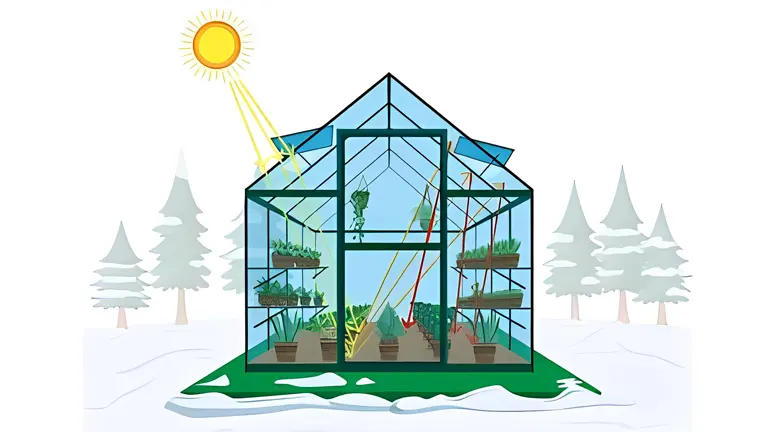
However, the color of the objects inside plays a significant role. Darker objects absorb more sunlight and thus become warmer, while lighter-colored objects reflect much of the sun’s rays, contributing less to the internal warmth of the greenhouse.
The Greenhouse Effect: Earth’s Natural Blanket
Interestingly, the workings of a greenhouse closely mimic Earth’s natural greenhouse effect. Our planet is swathed in a blanket of atmospheric gases that trap heat, keeping Earth’s average temperature at a cozy 58 degrees Fahrenheit (14 degrees Celsius).
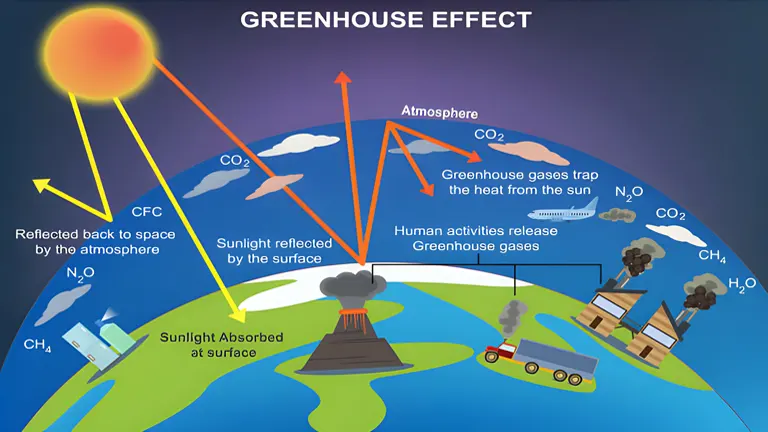
However, human activities, notably the burning of fossil fuels, are tipping this delicate balance, adding more greenhouse gases like carbon dioxide into the atmosphere and enhancing this natural greenhouse effect, leading to global warming.
The Challenges of Temperature Control
Greenhouses are not immune to the whims of weather. They can become unbearably hot during sunny days or chillingly cold during the night, especially in unheated greenhouses. The key to managing a greenhouse effectively lies in understanding and controlling these temperature swings.
During the Day
1. Ventilation
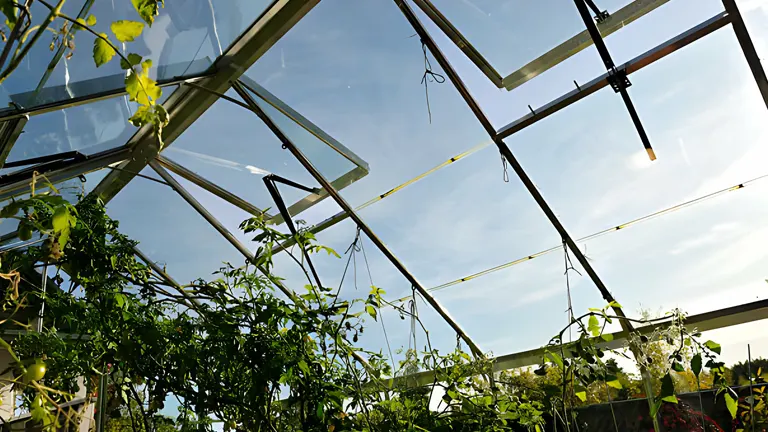
Over the day, especially in sunny conditions, the temperature inside a greenhouse can soar. Proper ventilation is crucial to prevent overheating and ensure a conducive environment for plant growth. This can be achieved through windows, vents, or even fans.
During the Night
1. Heating Systems

In areas with harsh winters, a greenhouse might require additional heating systems to maintain an adequate temperature for plant growth. The choice of heating system can vary based on the local climate, the greenhouse’s construction, and the gardener’s budget.
2. Insulation
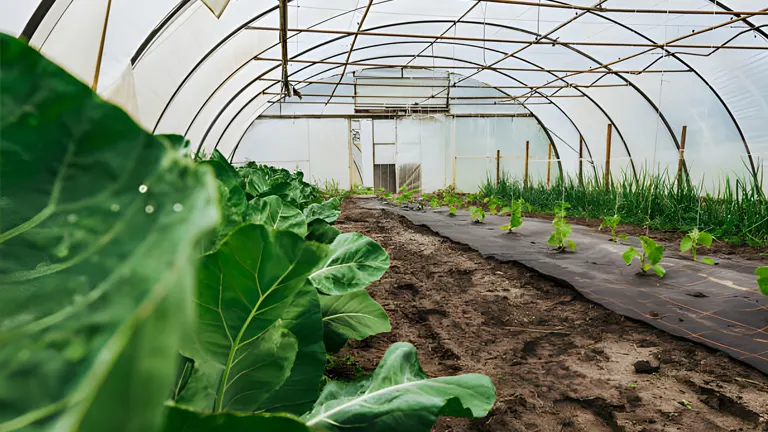
The materials used in a greenhouse, like polycarbonate panels, often have insulating properties. These materials can trap heat during the day, which can then be slowly released during the cooler night, mitigating the temperature drop.
Location, Location, Location

The positioning of a greenhouse is paramount. A south-facing orientation is ideal to maximize sunlight exposure. However, in extremely hot climates, some shade might be necessary to prevent overheating. Deciduous trees can provide a natural, seasonal solution, offering shade in summer and allowing sunlight through in winter after they shed their leaves.
The Role of Plants and Water
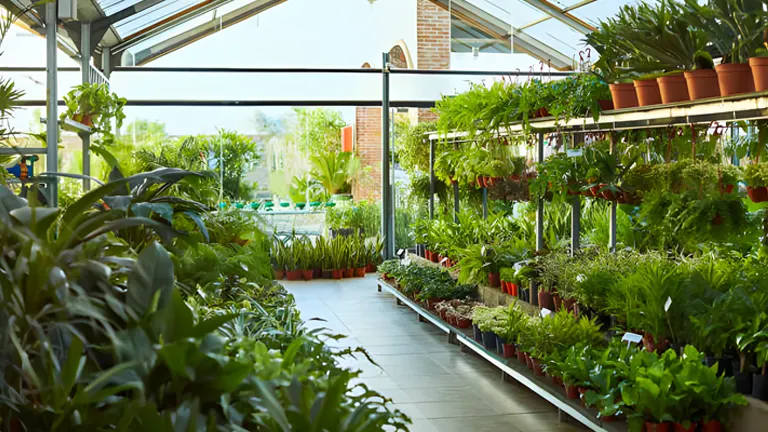
Inside the greenhouse, plants do their part in moderating temperatures. Through the process of transpiration, plants release water vapor, which adds to the humidity and can help in temperature control. Additionally, water containers can absorb heat during the day and release it at night, helping to stabilize temperatures.
The Realities of an Unheated Greenhouse
An unheated greenhouse, while beneficial, has its limitations, especially in regions with severe winter conditions. Without supplemental heating or lighting, the range of plants that can be grown during the colder months is limited. However, even in such setups, understanding the principles of heat retention and insulation can significantly enhance a greenhouse’s efficiency.
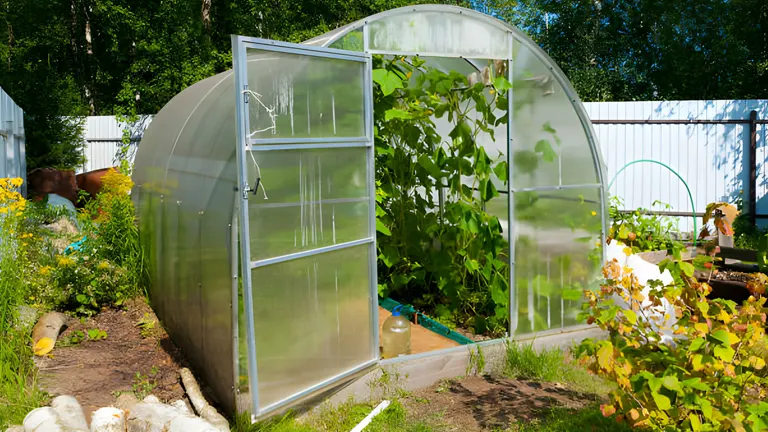
A gardener shared their experience of monitoring temperature changes over 24 hours in their unheated greenhouse. Despite the external temperature fluctuations, strategic management of vents and understanding the greenhouse’s insulation properties helped maintain a more stable internal environment.
What is the Largest Greenhouse in the World ?
The Eden Project, nestled near St Austell in Cornwall, UK, is not just the largest greenhouse in the world but a true architectural marvel. It encompasses two colossal biomes, each simulating different climatic conditions to house a diverse array of plant species from various parts of the globe.
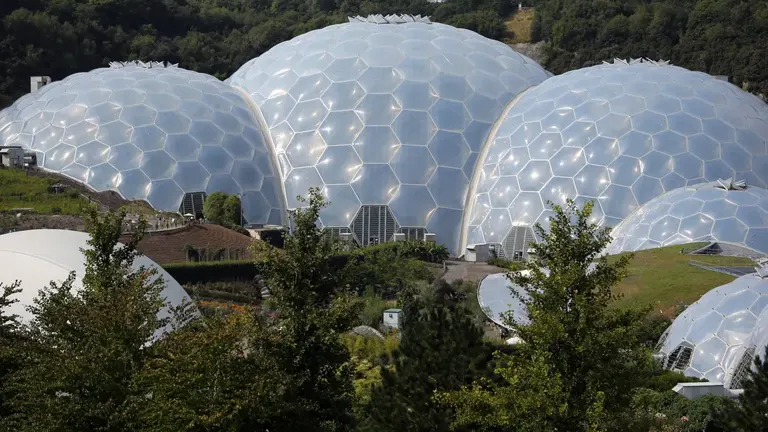
- The Humid Tropics Biome: This is the larger of the two structures and stands as a testament to human ingenuity and a commitment to studying and preserving diverse ecosystems. It towers at an impressive height of 55 meters (180 feet), covering an area of 25,390 square meters (273,295 square feet), and envelops a staggering volume of 415,730 cubic meters (14.681 million cubic feet). This biome is a window into the lush, humid tropical rainforests of the world, providing visitors with an immersive experience amidst a rich collection of flora and fauna.
- The Warm Temperate Biome: While smaller than its counterpart, this biome is no less significant. It spans 6,540 square meters (70,395 square feet) of floor space and holds a volume of 85,620 cubic meters (3.02 million cubic feet). This dome recreates the warm, temperate environments akin to the Mediterranean, South Africa, and parts of California, offering a unique insight into these distinct ecosystems and the plant life they support.
Together, these biomes create a living laboratory, presenting an array of environments ranging from the steamy jungles of the tropics to the mild climates of the Mediterranean. The Eden Project is more than a collection of plants; it is an educational and environmental facility aimed at showcasing the importance of natural ecosystems while emphasizing the need for their conservation and sustainable interaction with them. With its innovative design and commitment to sustainability, the Eden Project stands as a beacon of ecological awareness and a source of inspiration for visitors from around the world.
The Verdict
A greenhouse is not a magical solution to all gardening challenges, but rather a sophisticated tool that requires understanding and careful management. By mastering the principles of light energy, heat retention, and temperature control, and by considering factors like location, insulation, and ventilation, gardeners can turn their greenhouses into thriving havens for a diverse range of plants. Whether it’s extending the growing season, protecting delicate plants from harsh weather, or experimenting with exotic varieties, a well-managed greenhouse can be a cornerstone of successful gardening.
FAQs
- Can a greenhouse operate in extremely cold environments?
Yes, greenhouses can function even in very cold climates. They often include additional heating systems and are built with materials that provide superior insulation. Special considerations, such as double-glazing or using bubble wrap for insulation, help maintain a warm internal environment for plants. - How does the color of the interior affect plant growth in a greenhouse?
The color inside a greenhouse can influence how light is absorbed and reflected. Darker surfaces absorb more light and can help warm the greenhouse, while lighter surfaces reflect light, contributing to more even distribution of light and potentially preventing hotspots that could harm the plants. - Can I grow plants in a greenhouse that are not native to my region?
Absolutely! One of the great advantages of a greenhouse is the ability to manipulate the environment to suit plants that wouldn’t normally thrive in your local climate. This means you can grow exotic plants and off-season crops by maintaining the appropriate temperature, humidity, and light levels inside your greenhouse. - What is the best way to control pests in a greenhouse without resorting to chemicals?
Integrating biological pest control methods can be highly effective. This includes introducing beneficial insects that prey on harmful pests, using insect traps, and implementing strict hygiene practices to prevent the introduction and spread of pests. - How do I prevent my greenhouse from overheating during the summer?
Overheating can be mitigated by using shade cloths, whitewashing, or reflective coatings on the greenhouse roof. Ventilation is also crucial; therefore, ensuring that your greenhouse has operable windows, vents, or an automated climate control system can help maintain optimal temperatures. - Is it more energy-efficient to heat a greenhouse using solar power?
Yes, utilizing solar energy can be a highly efficient way to heat your greenhouse. Passive solar greenhouse designs maximize sunlight absorption during the day and store this heat for release during cooler periods. Active solar heating systems, such as solar thermal collectors, can also be used to heat water or air, distributing warmth throughout the greenhouse. - How does a greenhouse maintain optimal humidity levels?
Maintaining optimal humidity involves careful watering, adequate ventilation, and sometimes the use of humidifiers or dehumidifiers. Plants transpire and release moisture, so balancing air circulation and moisture levels is key to preventing mold growth and ensuring healthy plant development. - What is the most sustainable way to construct a greenhouse?
Building a sustainable greenhouse involves using eco-friendly materials, maximizing energy efficiency, and incorporating renewable energy sources. Materials like reclaimed wood or recycled plastic can be used for the structure, and incorporating rainwater harvesting systems can provide a sustainable water source for irrigation. - How does the choice of glazing material impact the effectiveness of a greenhouse?
The glazing material affects light transmission, insulation, and durability. Materials like polycarbonate are lightweight, provide good insulation, and diffuse light evenly. Glass is excellent for light transmission but can be heavy and less insulating. Choosing the right material depends on your climate, the plants you are growing, and your energy efficiency needs. - Can a greenhouse contribute to a home’s energy efficiency?
Yes, if attached to a home, a greenhouse can act as a passive solar collector, absorbing sunlight and releasing heat, thereby reducing the energy required to heat the home. This concept, known as a ‘sunspace’, can significantly contribute to reducing a home’s heating costs, especially in cooler climates.
Dive into our discussion below and become a key part of our greenhouse community. Whether you’re a seasoned gardener or a budding enthusiast, your insights are priceless. Share your tips, challenges, and triumphs to guide and inspire fellow plant lovers. Every piece of advice helps us grow a supportive and knowledgeable network for greenhouse enthusiasts everywhere. Let’s cultivate our collective wisdom and thrive together in our gardening journey!

David Murray
Forestry AuthorI'm David Murry, a forestry equipment specialist with a focus on chainsaw operation. With over 13 years of experience, I've honed my skills in operating and maintaining a wide range of machinery, from chainsaws to log splitters. My passion for the outdoors and commitment to sustainable forestry drive my work, which emphasizes safety, efficiency, and staying updated with industry advancements. Additionally, I'm dedicated to sharing my expertise and promoting environmental awareness within the forestry community.

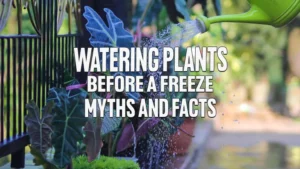
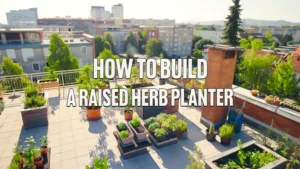

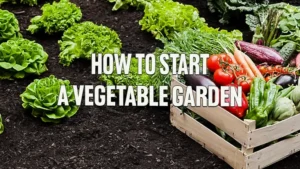

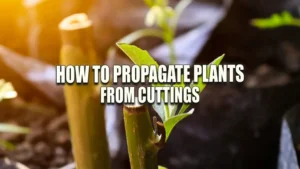

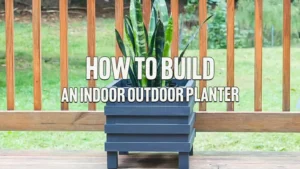
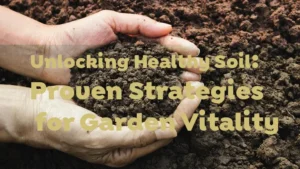



Leave your comment